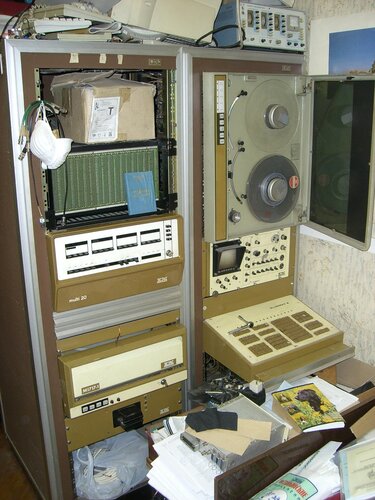Arif-Ru
Member
Hello all!
I repair a minicomputer and have some problems with teletype. I want to believe, that you'll help me.
Unfortunately, English is not mine native language. Excuse me for my errors, please.
Teletype was the main interface of this computer, and, unfortunately, the TTY was thrown away. I know only, that it was "an ancient American TTY with tape punch" - probably, ASR-33.
I want to construct a PC-emulator of teletype. Probably, after that I'll try to use some soviet teletype.
I already found out, that teletype interface is similar with COM - but use current loop instead voltage control. There is some scheme of converter in attachment to this message. Software emulator of teletype is included in standard Windows hypertrm.exe .
But I have some questions:
1). Are all ASCII-teletypes have the same interface? I mean, could I use this scheme for my unknown teletype controller?
2). I could attach either TTY controller or teletype to the system "converter-COM-emulator", couldn't I?
3). There are 5-line TTY on this scheme - but my TTY controller has only 4 lines (3+gnd). Which line is unnecessary on this scheme?
4). Author told in description of this scheme: some additional diodes should be there. Where should they be?
Thanks for replies!
Pavel.
I repair a minicomputer and have some problems with teletype. I want to believe, that you'll help me.
Unfortunately, English is not mine native language. Excuse me for my errors, please.
Teletype was the main interface of this computer, and, unfortunately, the TTY was thrown away. I know only, that it was "an ancient American TTY with tape punch" - probably, ASR-33.
I want to construct a PC-emulator of teletype. Probably, after that I'll try to use some soviet teletype.
I already found out, that teletype interface is similar with COM - but use current loop instead voltage control. There is some scheme of converter in attachment to this message. Software emulator of teletype is included in standard Windows hypertrm.exe .
But I have some questions:
1). Are all ASCII-teletypes have the same interface? I mean, could I use this scheme for my unknown teletype controller?
2). I could attach either TTY controller or teletype to the system "converter-COM-emulator", couldn't I?
3). There are 5-line TTY on this scheme - but my TTY controller has only 4 lines (3+gnd). Which line is unnecessary on this scheme?
4). Author told in description of this scheme: some additional diodes should be there. Where should they be?
Thanks for replies!
Pavel.
Attachments
Last edited:


